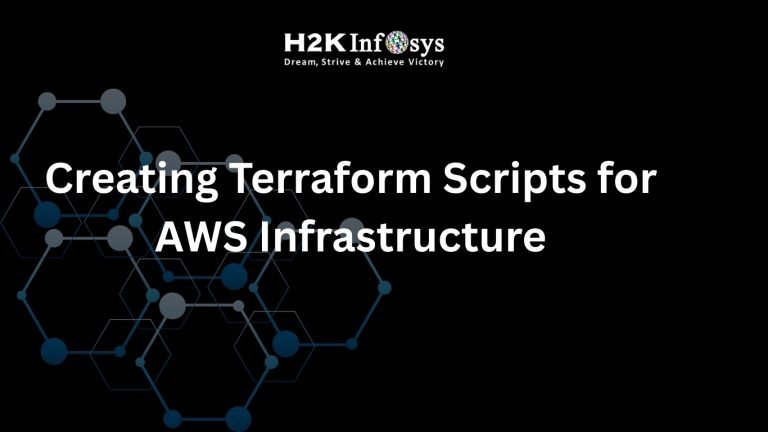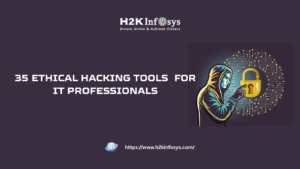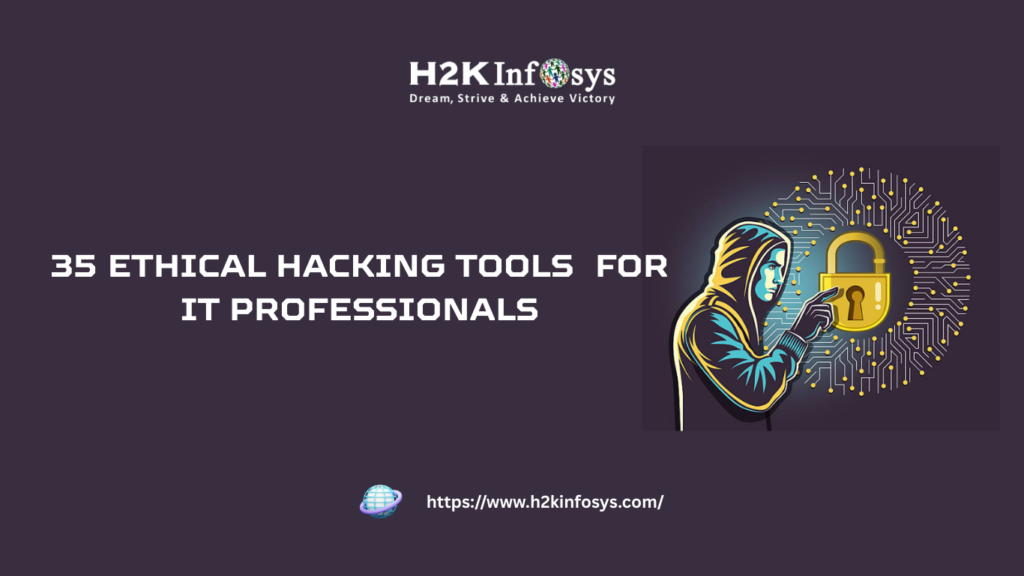Introduction: Why Terraform for AWS Infrastructure?
In the world of modern cloud computing, AWS (Amazon Web Services) stands out as a leading platform, offering robust tools and services to meet diverse infrastructure needs. As businesses strive for faster development cycles and secure, scalable systems, automation has become key. This is where Terraform comes into play.
Terraform allows developers and systems administrators to automate the provisioning and management of AWS Infrastructure using simple scripts. In this blog post, we will explore the intricacies of creating Terraform scripts for AWS Infrastructure. If you’re looking to enhance your DevSecOps capabilities and pursue a DevSecOps certification, this guide will offer valuable insights to help you succeed in AWS management and security.
Terraform, created by HashiCorp, is an open-source tool that enables Infrastructure as Code (IaC). It allows you to define both on-premises and cloud infrastructure in code. Using Terraform scripts, you can provision AWS resources, manage configurations, and ensure consistent environments across various stages of the software development lifecycle.
As organizations are increasingly adopting DevSecOps practices, learning how to automate infrastructure security through tools like Terraform is crucial. Through the integration of Terraform with AWS, you not only automate infrastructure management but also embed security into the pipeline from the very beginning, adhering to best practices for secure infrastructure as part of your DevSecOps journey.
Course Focus: DevSecOps and AWS Integration
For professionals aiming to master cloud infrastructure and security, pursuing DevSecOps training can be a game-changer. AWS DevSecOps certification is one of the top certifications for IT professionals focusing on securing AWS infrastructure through automation. By leveraging Terraform and AWS, you can ensure that the infrastructure not only meets business requirements but also aligns with security best practices.
In this guide, we will dive into Terraform’s application for AWS Infrastructure, explaining how to write effective Terraform scripts for creating and managing AWS services securely.
1. Setting Up Your AWS Environment
Before diving into writing Terraform scripts, it is essential to set up your AWS environment properly. Follow these steps to get started:
- Create an AWS Account: If you don’t already have one, go to AWS’s official site and create an account. You’ll need to provide billing information, and AWS offers a free tier for new users to get started with basic resources.
- Install AWS CLI: Install the AWS Command Line Interface (CLI) to interact with your AWS infrastructure. This tool will help you configure your environment with your AWS credentials.
aws configure
You will need to enter your AWS Access Key ID, Secret Access Key, region (e.g., us-east-1), and output format (e.g., json).
- Set Up IAM Roles: IAM (Identity and Access Management) roles allow you to securely interact with AWS resources. Make sure your IAM policies provide sufficient access to create and manage resources. A best practice is to assign only the necessary permissions and avoid broad access, as part of the principle of least privilege.
Once your AWS environment is configured, the next step is to install Terraform.
2. Installing Terraform
Terraform can be installed on various platforms, including Windows, macOS, and Linux. You can download it from the official HashiCorp website. After installing, verify your installation by running the following command:
terraform --version
This will confirm that Terraform is correctly installed on your system. Now that Terraform is ready, you can start defining your AWS Infrastructure.
3. Writing Your First Terraform Script for AWS Infrastructure
To understand how Terraform interacts with AWS, let’s create a simple script to provision an AWS EC2 instance. The script consists of several blocks:
Provider Block
The provider block specifies which cloud platform Terraform should interact with. In this case, it’s AWS.
provider "aws" {
region = "us-east-1"
}
This block tells Terraform to work with AWS services and specifies the AWS region (e.g., us-east-1) where your infrastructure will be provisioned.
Resource Block
The resource block defines the type of AWS resource you want to create in this case, an EC2 instance.
resource "aws_instance" "example" {
ami = "ami-0c55b159cbfafe1f0" # Replace with the AMI ID of your choice
instance_type = "t2.micro"
}
This simple script will create a t2.micro EC2 instance using the specified AMI ID in the us-east-1 region. If you don’t know the AMI ID, you can find one in your AWS console.
To apply this configuration:
- Initialize the Terraform directory by running
terraform init. - Plan the execution to see what Terraform will do by running
terraform plan. - Apply the configuration with
terraform apply, and Terraform will provision the EC2 instance.
4. Managing AWS Infrastructure Using Terraform
One of Terraform’s powerful features is its ability to manage the entire lifecycle of your AWS resources. From initial creation to updates and deletions, Terraform ensures that your infrastructure remains consistent.
Here’s a breakdown of how to manage AWS Infrastructure with Terraform:
- Initialization: Run
terraform initto initialize the working directory containing Terraform configuration files. This will download any necessary plugins and prepare the environment. - Execution Plan: Use
terraform planto view the changes that Terraform will make to your AWS Infrastructure. This is a great way to verify that your Terraform script will do what you expect before applying any changes. - Apply Changes: Execute
terraform applyto apply the changes to AWS. This will create, modify, or delete resources as necessary to match your configuration.
5. Security Best Practices for AWS Infrastructure
When it comes to AWS Infrastructure, security is crucial. Here are a few best practices for securing your Terraform-managed AWS resources:
- Use IAM Roles and Policies: Always use roles with the least privileges necessary to minimize potential security risks.
- Enable Encryption: Ensure that sensitive data is encrypted both at rest and in transit. For example, enable encryption for your Amazon S3 buckets, EBS volumes, and EC2 instances.
- Use Security Groups: Configure security groups to control inbound and outbound traffic for your EC2 instances. Ensure that only necessary ports are open. For example, allow only SSH (port 22) access from trusted IP addresses.
- Enable Monitoring: Leverage AWS CloudWatch to monitor the health and performance of your AWS Infrastructure. Use CloudWatch Logs to capture log data for security auditing and troubleshooting.
By embedding security practices directly into your Terraform code, you’re automating DevSecOps in your AWS environment. This helps ensure that security is prioritized from the very beginning of the infrastructure lifecycle.
6. Advanced Terraform AWS Configuration Examples
Let’s explore a more advanced scenario where we deploy an AWS VPC (Virtual Private Cloud) with subnets, a security group, and an EC2 instance within it.
VPC Resource
resource "aws_vpc" "main" {
cidr_block = "10.0.0.0/16"
enable_dns_support = true
enable_dns_hostnames = true
}
This block creates a VPC with the CIDR block 10.0.0.0/16, which allows you to create 65,536 private IP addresses.
Subnet Resource
resource "aws_subnet" "subnet1" {
vpc_id = aws_vpc.main.id
cidr_block = "10.0.1.0/24"
availability_zone = "us-east-1a"
}
This subnet resource defines a subnet within the VPC created above with the 10.0.1.0/24 CIDR block.
Security Group Resource
resource "aws_security_group" "allow_ssh" {
name_prefix = "allow_ssh_"
description = "Allow SSH access"
ingress {
from_port = 22
to_port = 22
protocol = "tcp"
cidr_blocks = ["0.0.0.0/0"]
}
}
This security group allows SSH access (port 22) from anywhere.
EC2 Instance Resource
resource "aws_instance" "web" {
ami = "ami-0c55b159cbfafe1f0"
instance_type = "t2.micro"
subnet_id = aws_subnet.subnet1.id
security_group = aws_security_group.allow_ssh.id
}
This configuration sets up an EC2 instance inside the subnet with the necessary security group.
7. Using Terraform State Files
Terraform uses state files to keep track of the infrastructure it manages. The state file contains all the metadata and information about your AWS resources.
By default, Terraform stores the state file locally, but for team environments, it’s a good idea to use remote backends like Amazon S3 or HashiCorp Consul for storing Terraform state files.
You can configure a backend with a simple block in your Terraform configuration:
terraform {
backend "s3" {
bucket = "my-terraform-state"
key = "terraform.tfstate"
region = "us-east-1"
}
}
8. Benefits of Automating AWS Infrastructure with Terraform
There are several benefits to using Terraform for AWS Infrastructure:
- Consistency: Terraform allows you to replicate environments easily, ensuring consistency across development, staging, and production.
- Version Control: Since Terraform configurations are written in code, they can be stored in version control systems (e.g., Git). This enables collaboration and change tracking.
- Time-Saving: By automating AWS Infrastructure, Terraform drastically reduces the time required for manual configurations and error-prone deployments.
- Scalability: Terraform scripts can scale across multiple AWS regions and services, providing you with flexibility for large-scale deployments.
9. Troubleshooting Terraform Scripts for AWS Infrastructure
During your work with Terraform and AWS, you might run into issues. Here are some tips for troubleshooting common Terraform errors:
- Validate Your Code: Always run
terraform validateto check your configuration files for syntax errors. - Check State File: If Terraform is not applying changes correctly, check your state file for discrepancies between the local environment and what Terraform believes exists.
- Use Debug Mode: Terraform allows you to run commands in debug mode, which provides detailed output to help with troubleshooting.
Conclusion: Secure Your AWS Infrastructure with Terraform
In conclusion, Terraform scripts for AWS Infrastructure are an essential tool for any DevSecOps engineer looking to automate and secure cloud environments. By mastering the creation and management of Terraform scripts, you can enhance your AWS Infrastructure’s security, scalability, and consistency.
Whether you are a beginner or a seasoned professional, gaining expertise in AWS Infrastructure, Terraform, and DevSecOps certification will elevate your career.
If you are ready to take the next step in securing and managing AWS infrastructure with Terraform, enroll in H2KInfosys DevSecOps online training today. Our courses will equip you with the skills you need to thrive in the world of cloud security.
Key Takeaways:
- Terraform is an essential tool for automating AWS Infrastructure management.
- With Terraform, you can create, manage, and secure AWS resources with ease.
- Following DevSecOps best practices ensures that your infrastructure is both secure and scalable.
Join H2KInfosys today and start your journey with AWS DevSecOps training to enhance your skills and career prospects.

























